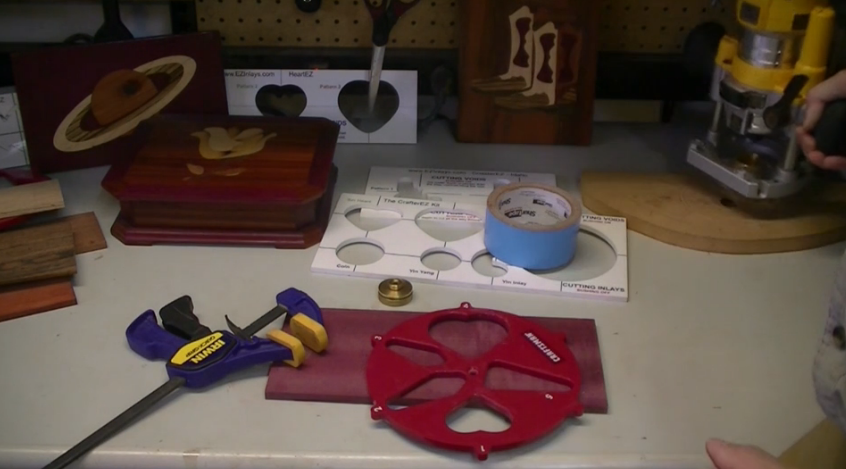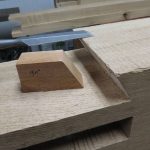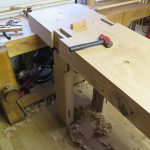We may receive a commission when you use our affiliate links. However, this does not impact our recommendations.
A plunge router and template are two must-have tools for wood inlay work, and to get tight-fitting inlays, you’ll need some way to make sure your work pieces don’t move around while you’re routing. Clamps usually work, but there isn’t always room. When you need to secure a template to a work piece for routing, double-sided tape is usually your best bet. You won’t have to worry about running into clamps or having to reposition them during a cut.
If you’re worried about the holding power of double-sided tape, don’t be. When I worked in a cabinet shop, I frequently used tape to secure routing templates. It never failed. The key is to get the right kind of tape, and the plastic stuff works best. In fact, it sticks so well you’ll probably have a hard time getting it off your work when you’re done with it.
Tape is cheap. You can get a roll of plastic carpet tape for two or three dollars, and depending on how often you use it, a roll can last for weeks, months or longer. It’s useful for more than just templates; I use it all the time on my CNC router to keep material in place during routing.
Double-sided tape doesn’t stick well to dusty surfaces. Wipe the dust off of any work pieces or templates before you apply tape to them. Cold can also be a problem, and you might notice that your tape doesn’t stick when your shop isn’t quite warm enough. However, if your shop is too cold for tape to stick, it’s probably too cold for glue to dry properly, and you might want to save your woodworking for warmer weather.
You’ll find that double-sided carpet tape is one of the most useful things to have on hand when doing inlay work. It’s helpful anytime you need to secure a template to a work piece or hold something down without clamps. I hear it’s also good for keeping carpet in place.
Learn the fundamentals of inlay work in Inlays Made Easy from Popular Woodworking University. This four-week course will teach you about the tools and techniques you need to make all kinds of inlays.
Here are some supplies and tools we find essential in our everyday work around the shop. We may receive a commission from sales referred by our links; however, we have carefully selected these products for their usefulness and quality.










